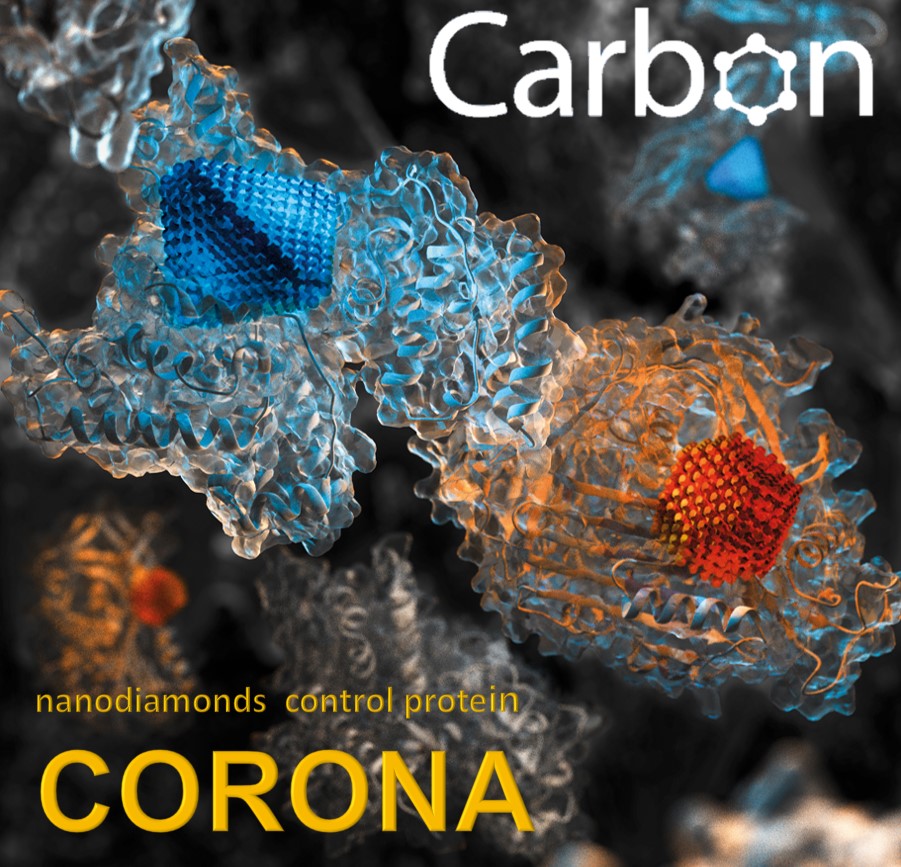Our work on the “Bio-chemically selective interaction of hydrogenated and oxidized ultra-small nanodiamonds with proteins and cells” has been recently published in Carbon [Machova et al., Carbon 162 (2020) 650-661, doi:10.1016/j.carbon.2020.02.061] and selected for the journal front cover page (pdf). Ultra-small nanoparticles of a size smaller than or comparable to cell membrane pores (1-5 nm) have significant potential in biomedicine. In our study, we performed a systematic in vitro investigation of fundamental bio-chemical interactions of such ultra-small hydrogenated and oxidized detonation nanodiamonds (DNDs) with biomolecules and human cells. We applied mass spectrometry methods (LC-MS/MS) for the qualitative and quantitative analysis of the protein corona as a function of the surface chemistry and size of DNDs. We observed that protein interactions with DNDs are more related to their surface chemistry (H/O-termination) rather than size. Bioinformatics characterization of the identified proteins pointed to the strong influence of electrostatic interaction between proteins and DNDs depending on their surface termination. Such specific interaction lead to formation of different protein corona on hydrogenated or oxidized 2 nm DNDs, which influenced also their interaction with cells including different level of cytotoxicity. The work has been done jointly by the teams from Charles University in Prague, Czech Academy of Sciences and Czech Technical University in Prague.

